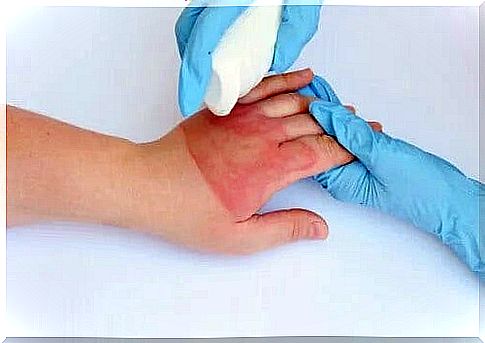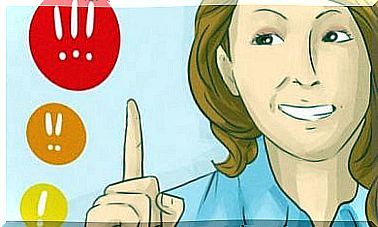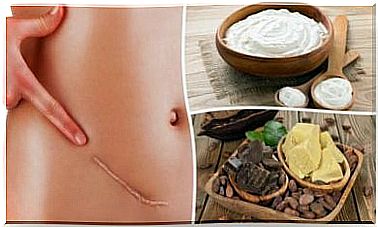Steam And Hot Water Burns: Treatments And Recommendations
Contact with steam and hot water can cause burns of various degrees. When should I see a doctor? What should be done to avoid complications? We’ll go into it in detail at this point.

Steam and hot water burns, also known as “scalds”, are one of the most common accidents in the home. At first glance, they hardly seem to affect the fabric; however, they can cause serious damage. For this reason, it is important to know how to use it.
When we think of burns, the first thing that comes to mind are those caused by fire. But, as the Centers for Disease Control and Prevention (CDC) found, of all patients hospitalized for burns in the United States, between 33% and 58% are the result of scalds.
Generally there are different types of burns, depending on the depth. In this sense , it can be first, second or third degree burns. The latter is the most severe and deep tissues such as muscles and nerves can be affected.
How do steam and hot water burns occur?
Most scalds happen around the house while doing everyday chores. When water reaches its boiling point, it turns into steam. During this process, the particles become smaller, but maintain a temperature of approx. 100 ° C.
Therefore , both hot water and steam can cause very severe burns. According to the Spanish Society of Pediatrics , hot water at 60 ° C can cause a third degree burn in a child in just 3 seconds.
Burns are common when cooking food. They occur in particular when handling everyday objects such as kettles, steamers or pressure cookers. Since water expands the area it occupies when it is converted into steam, it usually escapes from the container at a certain pressure. As a result, tissue damage increases.
The CDC states that the most common body parts scalded are arms and hands, with a frequency of 42%, while feet and legs are second. This is related to the process itself, as burns can be caused by spilling hot liquids.

Symptoms of steam and hot water burns
The symptoms experienced with this type of burn can vary based on the depth of the burn. In any case, this leads to pain or burning in the affected area, as it results in direct damage to the tissue that came into contact with the water or steam.
In the case of a first-degree burn , in addition to the corresponding burning sensation, the affected area is only reddened and possibly swollen. In these cases, only the superficial layer of the skin is affected, so the damage is minimal.
Conversely, if the hot water or steam caused a second-degree burn, blisters or small vesicles will appear on the affected area. This is because the heat penetrates the deeper layers of the skin and the skin becomes detached as a defense mechanism of the body.
For third-degree burns , blisters can be seen as well as areas where the deep tissue is exposed. In addition, the damage to the nerve fibers can limit the function of the affected area.
First aid for steam and hot water burns
Due to the frequency of steam and hot water burns, it is imperative to understand first aid measures and what to do if such a situation arises. By taking appropriate action immediately, the damage suffered can be limited and complications avoided. What is to be considered?
Move the person away from the heat source
The first thing to do with any type of burn is to remove the person from the heat source and move them to a safe location. This will prevent injuries in unaffected areas.
Cool the wound and remove any clothing that will come into contact with it
Once the person is safe, the wound should be cooled. To do this, it is best to soak the affected area in warm water for 20 minutes. This cools the tissue and prevents the burn from progressing. Under no circumstances should ice be applied as the cold can cause further damage.
After cooling the wound, remove any clothing or jewelry that has come into contact with the affected area. In this case, it is usually best to cut off your clothing to avoid damage. If for any reason the clothing sticks to the skin, it should not be removed.
Cover the affected area
After you’ve removed all of your clothing, it’s a good idea to dampen a sterile gauze bandage or cloth and cover the affected area. If the burned area is not very large, you can use a bandage that does not compress the limb as much to better protect the area.
In this case , pain relievers such as paracetamol or ibuprofen can be used to relieve severe pain. In the case of large burns, the body temperature can drop. So try to keep it at a normal value.
Do not burst the blisters or apply substances to the burn wound
Bubbles that appear must not be made to burst under any circumstances. This process should only be performed by medical personnel if necessary. If the blisters burst, there is a high risk of infection and injury complications.
It is also not advisable to apply toothpaste, coffee, butter, or any other substance to the affected area, as this can also encourage bacterial infection. The use of creams and ointments should only be done under strict medical supervision.
When should I see a doctor?
In most cases, steam and hot water burns are first- or second-degree burns, so medical attention is usually not required. In these cases, it is enough to follow the recommendations above for a good recovery.
However, if the affected area is very large or if it is a third degree burn, a doctor should be seen immediately. These burns are particularly serious in children and can be life-threatening.
Other situations in which you should see a doctor for a burn include the following:
- More severe pain, redness, or swelling
- Temperature over 38 ° C
- Appearance of purulent fluid in the wound
- Difficult wound healing
- If the eyes or the airways are affected
Various studies show that between 30 and 40% of patients with scalds are under 15 years old. In these cases it is always advisable to call the emergency services, as children are usually less resistant to this type of injury and can be more affected than adults.

Beware of children
Unfortunately, children are most affected by steam and hot water burns. This may be due to their curious nature. In this regard, keeping them out of the kitchen is critical, especially while food is being cooked. This simple measure can prevent a lot of accidents.
It is also advisable to be careful when bathing the little ones and to make sure that the water temperature does not exceed 38 ° C. It is important to remember that children’s skin is much more sensitive and they are prone to serious injury, even with a short exposure time.









